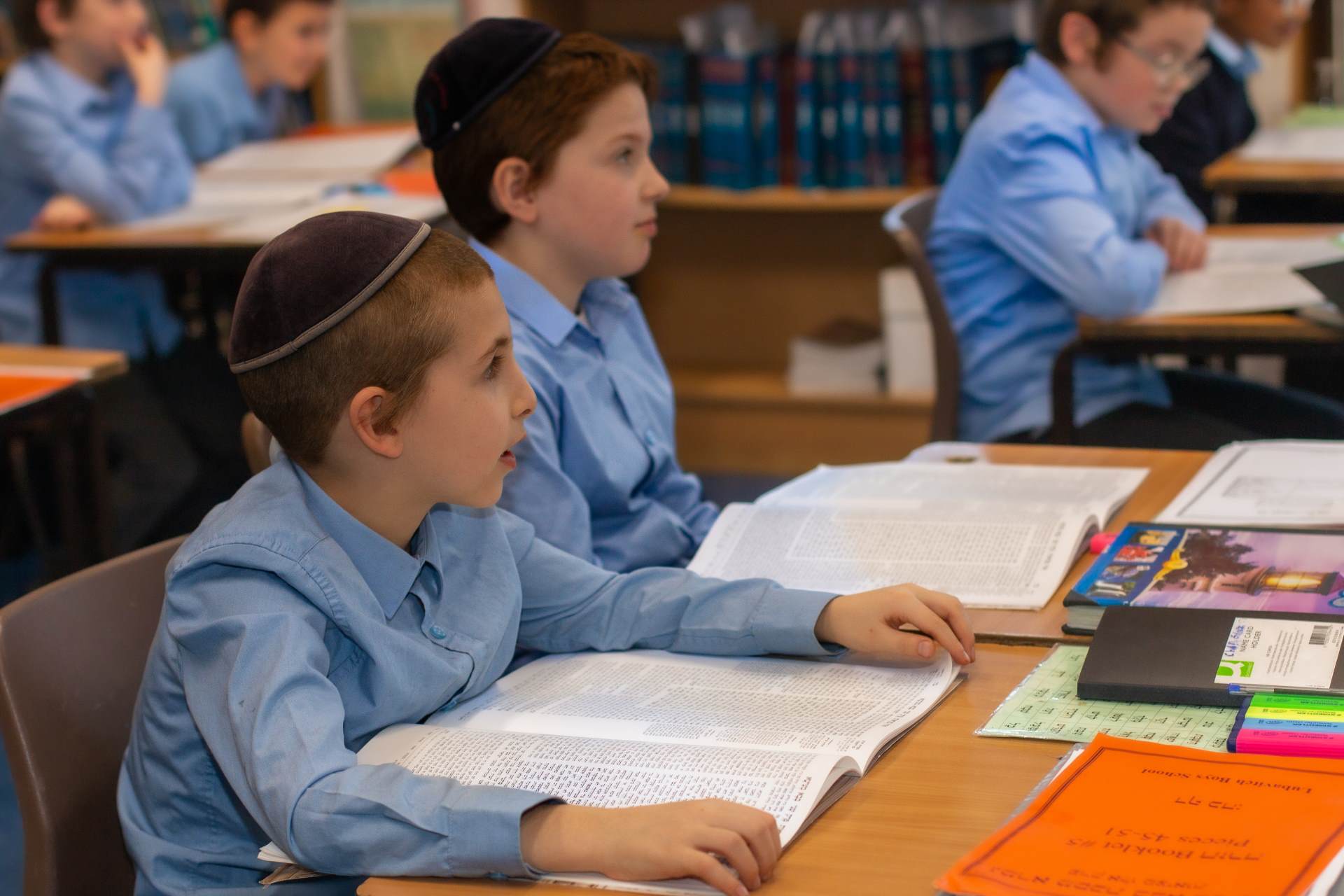Kodesh
The Kodesh curriculum is continuously monitored and developed to ensure that progression takes place and that all children’s needs are met, with access for all. This takes place, not only with the class Rebbes (Jewish studies teachers) but with additional support staff, dedicated to supporting pupils in the development of their Jewish knowledge and skills.
The Limmudei Kodesh curriculum, introduced in Reception and continuing to Year 6, includes:
- Kriah (Hebrew reading)
- Kesivah (Hebrew handwriting skills)
- Sedra (weekly Torah portion) and Festivals
- Biblical and Classical Hebrew vocabulary and grammar
- Yediah Klollis (Jewish life and practice)
- Chumash (Five Books of the Torah – Old Testament).
- Study of the Chumash with a famous medieval Torah commentator by name of Rashi
- Mishneh – Oral Law
- Gemora (Talmud) – Expansion of Mishneh
- Nach (Books of the Prophets)
Chumash
Talmidim at Lubavitch Boys' Primary School start learning Chumash in Year 1, after going through a vocabulary program to help prepare them for this. At the heart of Chumash learning is to connect with the Torah that was given at Har Sinai, to their ancestors, over 3000 years ago, in an unbroken train of tradition, going from father to son and Rebbe to talmid. We want that Chumash should be inspiring and full of moral and ethical instruction for our young students. We also want to prepare the children for future independent learning, by gaining textual and grammatical skills, each class according to its maturity.
Mishnayos
In Year 3, talmidim start their study of תורה שבעל פה with the learning of Mishnayos. Here we start handing over the traditions (mesorah) of the foundations of Jewish life. It is through Mishnayos that we expose the talmidim to a new way of thinking and understanding of their religion. The concept of halocho and law is instilled into their hearts and at the same time to understand how debate and critical thinking has its place. Understanding, that whilst the Law was given over to Moses with full clarity, over the centuries and millennia, clarity over the law had become forgotten and were the subject of honest discussion and debate amongst the great Tannaim of the late-Temple and post-Temple era. Our aim, is to train the young minds of our students to the ideas of each opinion and to apply those conclusions to their own Jewish lives.
Gemara
Students begin learning Talmud Bavli in Year 5, with the traditional perek of אלו מציאות. We understand how the language and syntax is extremely complicated and therefore our goal in Year 5 is primarily to decode a 'piece of gemara'. We work on the understanding that learning gemoro is not something that will finish when they leave school, but is something they will learn and delve into throughout their entire lives, being that gemoro is the foundation for Jewish religious life, and therefore our job is to provide them the fundamental textual skills to enable that deeper learning to take place as they progress in their education into secondary school and beyond. At the same time, we pique their curiosity by touching upon the idea that the main concepts of gemara are hidden beneath the surface, textual level.
Kriya
Yediyah Klalis
Halocho

